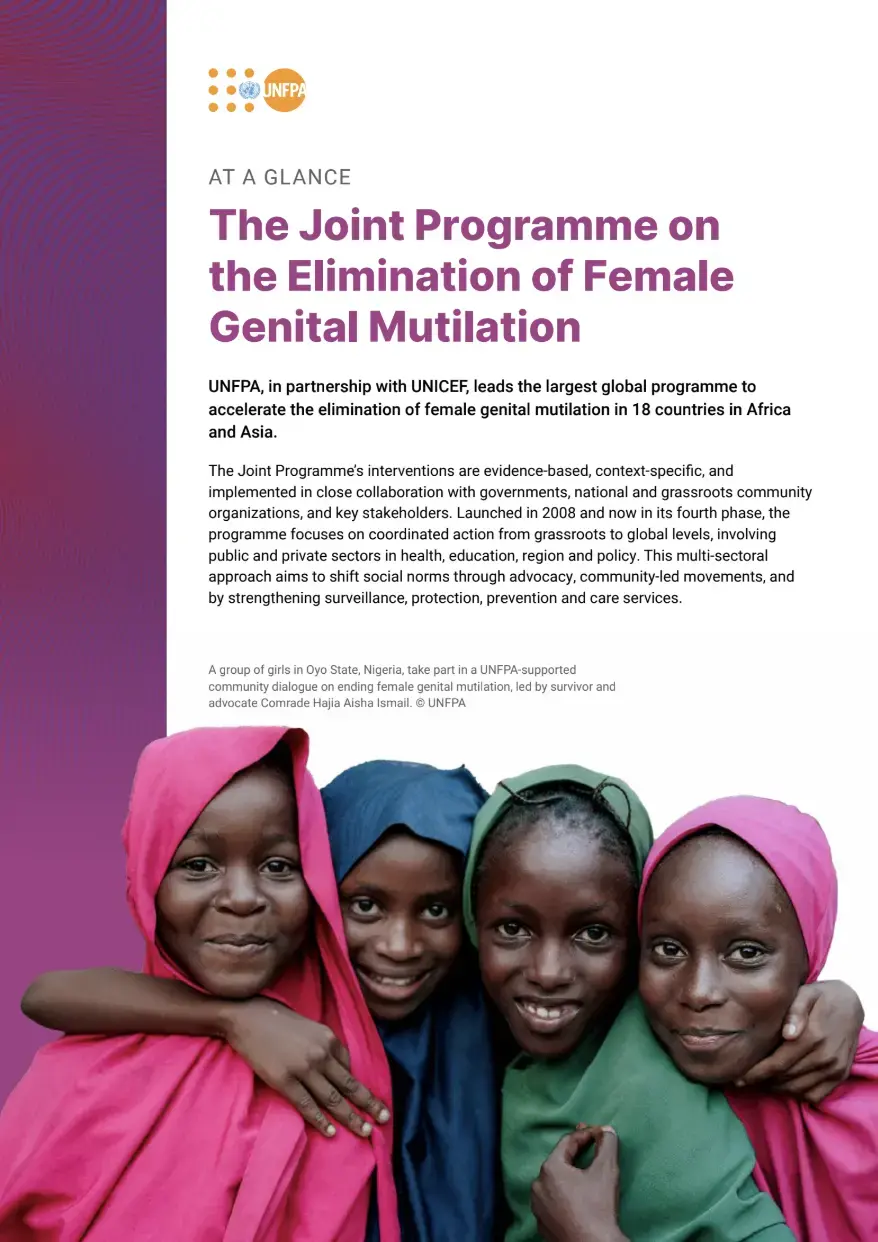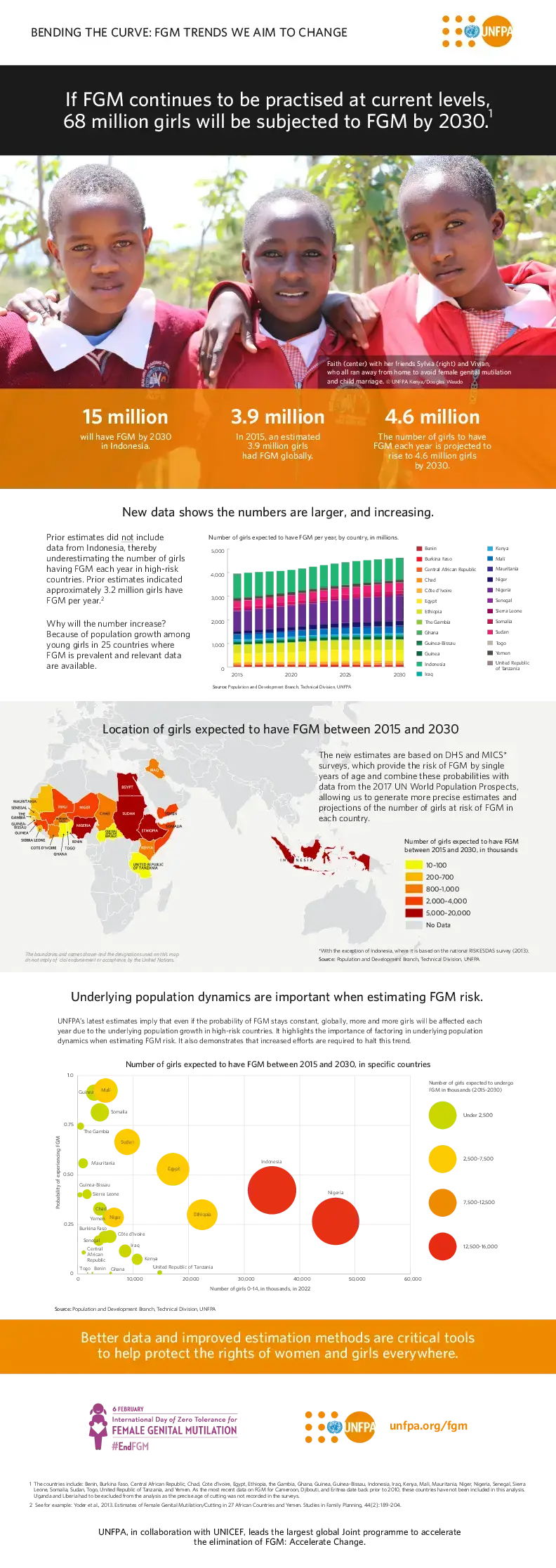Why invest in the Joint Programme on the Elimination of Female Genital Mutilation?
Ending female genital mutilation by 2030 is within reach, but only with urgent and sustained investment. Achieving this goal requires an estimated $2.1 billion, yet the cost of protecting one girl is just $95 — a small investment with a lifelong impact. This support can help scale up proven interventions, strengthen community-led movements, and drive policy change that protects millions of girls.



